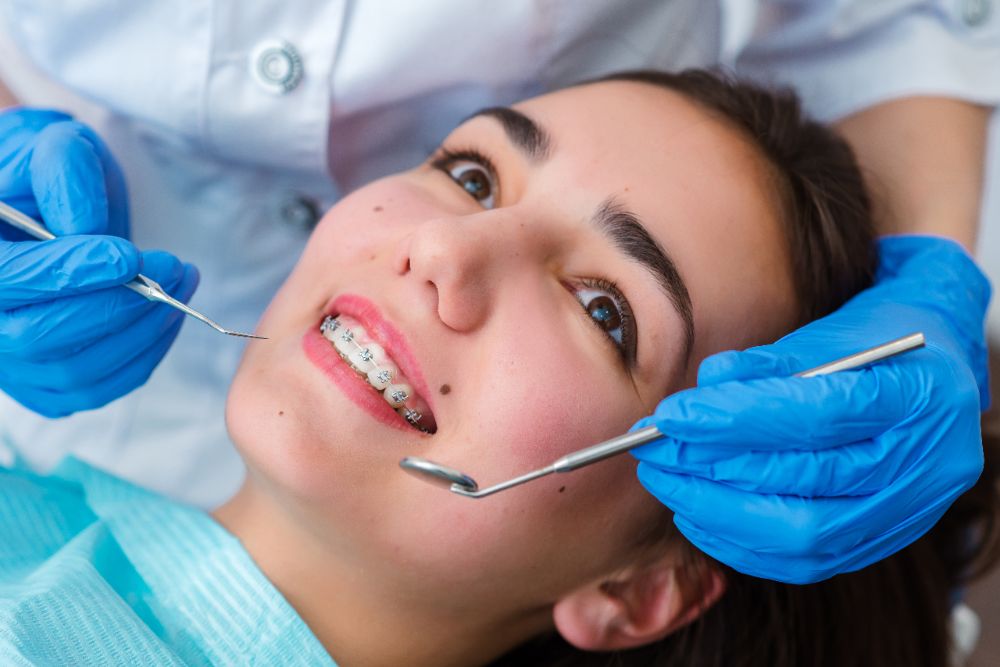Your Overview to Cumming Invisalign: Straightening Teeth with Style and Comfort
Your Overview to Cumming Invisalign: Straightening Teeth with Style and Comfort
Blog Article
Comprehensive Guide to Orthodontics Treatments for Fixing Dental Misalignments
In the world of orthodontics, the trip to achieving a flawlessly lined up smile involves a myriad of treatments tailored to remedy dental imbalances. From standard braces to unseen aligners and even medical choices, the area of orthodontics provides an array of services to address varying levels of dental abnormalities. Understanding the ins and outs of each procedure, including their devices, benefits, and possible drawbacks, is vital in making informed choices concerning one's orthodontic treatment. As we browse through the detailed overview to orthodontic procedures for remedying oral misalignments, the complex details of each method will certainly unravel, losing light on the course towards a functional and unified oral alignment.
Orthodontic Procedures Introduction

In enhancement to clear aligners and conventional braces, orthodontists may also advise various other interventions like headgear, palatal expanders, or retainers to resolve details positioning problems (aligners). These procedures are customized to every client's unique demands and may involve a mix of treatments to achieve the wanted results. Regular changes and tracking are essential components of orthodontic treatment to make certain development is on track and to make any kind of required modifications along the road. By undergoing orthodontic treatments, clients can not only attain a straighter smile yet also boost their overall dental health and feature.
Traditional Braces: Just How They Function
When thinking about orthodontic treatments for dental misalignments, conventional braces stand out as a time-tested method for fixing teeth positioning. Conventional braces contain braces, cords, and bands that interact to apply continuous pressure on the teeth, progressively relocating them into the desired alignment. The braces are affixed to the teeth utilizing a special adhesive, and the wires are threaded through the braces. By changing the tension of the wires, orthodontists can regulate the instructions and force related to each tooth, guiding them right into correct positioning in time.
As pressure is used to the teeth through the dental braces, the bone bordering the teeth is reshaped to support the brand-new tooth positions. Individuals will certainly require regular modifications at the orthodontist's workplace to guarantee the dental braces proceed to apply the appropriate stress for effective teeth movement.
Undetectable Aligners: Pros and Cons
These clear, tailor-made trays are basically unseen when put on, making them an enticing option for people looking for a much more visually pleasing orthodontic treatment. Clients can remove the aligners before consuming or cleaning their teeth, lowering the danger aligners of food getting stuck in the appliance and simplifying the cleansing procedure.

Surgical Orthodontic Options
Surgical treatments in orthodontics present sensible options for attending to intricate dental misalignments that may not be successfully fixed via conventional orthodontic therapies. While conventional dental braces and invisible aligners can correct lots of orthodontic issues, specific situations require surgical intervention to achieve optimum results. Surgical orthodontic choices are commonly recommended for serious malocclusions, considerable jaw disparities, and situations where the underlying bone structure requires alteration to attain correct alignment.
One common surgical orthodontic procedure is orthognathic surgery, which involves rearranging the jaws to deal with useful concerns such as trouble chewing or speaking. This surgery is frequently carried out in partnership with an orthodontist that assists line up the teeth before and after the procedure. Surgical orthodontics may additionally entail treatments to subject affected teeth, eliminate excess gum tissue, or reshape the jawbone to create an extra unified face profile.
Before considering surgical orthodontic choices, clients undergo a comprehensive analysis to establish the requirement and potential advantages of such treatments. cumming orthodontist. While surgery might seem difficult, it can considerably improve both the feature and looks of the smile in situations where conventional orthodontic therapies fall short
Retainers and Post-Treatment Treatment

Failing to abide with post-treatment care directions can result in regression, where the teeth progressively move back towards their original placements. Regular retainer wear, good oral hygiene, and routine dental examinations are crucial for maintaining the outcomes achieved via orthodontic surgical procedure and making certain the long-lasting security of the fixed oral placement.
Verdict
In final thought, orthodontic procedures provide various alternatives for dealing with oral misalignments. Surgical orthodontic options are readily available for extra serious misalignments. Overall, orthodontic procedures can effectively boost oral health and wellness and aesthetic look.
As we navigate through the thorough overview to orthodontic procedures for dealing with oral imbalances, the elaborate details of each approach will unravel, dropping light on the path towards a harmonious and functional oral placement. - orthodontics
One of the most usual orthodontic therapies is the usage of dental braces, which consist of steel brackets and cords that apply mild pressure to progressively move teeth right into the preferred placement.When thinking about orthodontic treatments for dental imbalances, conventional dental braces stand out as a tried and true method for dealing with teeth positioning. Furthermore, invisible aligners might not be suitable for complicated orthodontic concerns that require even more significant teeth motion, as they are usually suggested for light to moderate situations. Retainers are personalized orthodontic devices created to hold teeth in their dealt with positions after the conclusion of orthodontic therapy.
Report this page